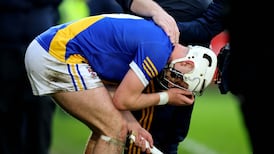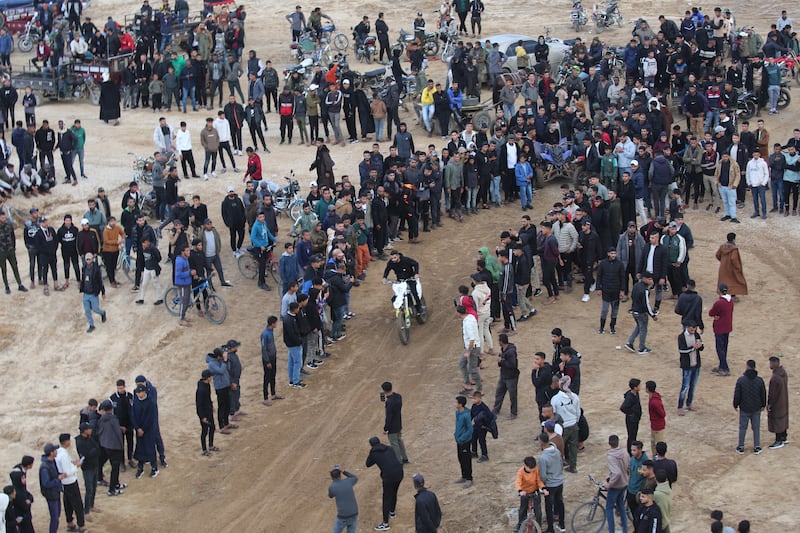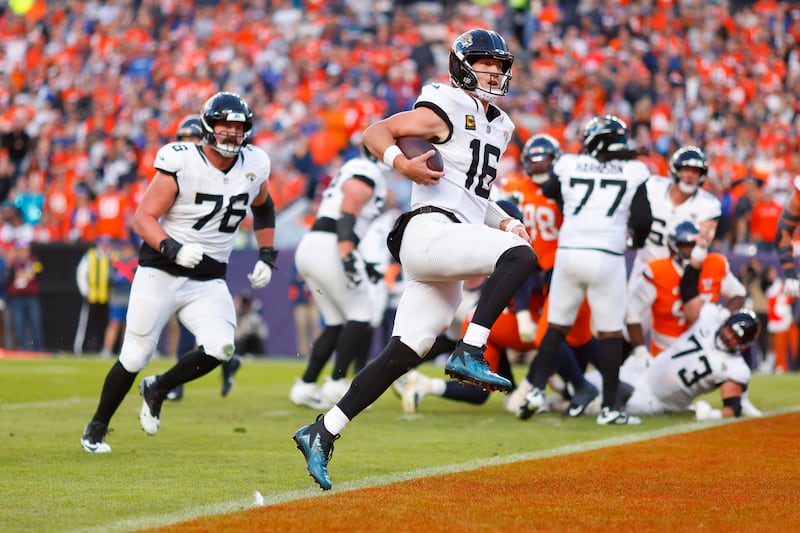There is a charged scene in Moneyball where Brad Pitt’s character Billy Beane, the maverick general manager of the Oakland As baseball team, has a meeting the club’s hard-boiled scouts, trying to figure out how they can replace their star players on a shoestring budget. Around the table the scouts have their say, old school and reductive; in Beane’s mind their opinions are obsolete.
Sitting at the end of the table is Jonah Hill’s character Paul DePodesta, a young economics graduate from Yale, who has already convinced Beane of a radical new way to evaluate players. “This is the new direction of the Oakland As,” Beane announces to the room. “We are card counters at the blackjack table and we’re going to turn the odds on the casino.”
Baseball had always been obsessed with numbers, and the data DePodesta was employing for his new metrics was available to everyone; the shape-shifting difference was how he saw the numbers. The Michael Lewis book, on which the movie is based, followed the Oakland As through the 2002 season, when they went on a record breaking 20-game winning streak, using undervalued players recruited on DePodesta’s recommendation.
In the following years DePodesta’s methods were adopted by other teams, sometimes with spectacular results, though not always. His fundamental triumph, though, was forcing baseball to interrogate its relationship with data. What really matters? Why?
READ MORE
In the 20 years since Moneyball was published, other sports have embarked on that journey. In soccer, the expected goals (xG) model has revolutionised how the game is analysed; in golf, the strokes-gained metric invented by Mark Broadie of Columbia University added new layers of understanding to a game swamped by moribund numbers.
For Gaelic football and hurling, though, it was essentially a blank page. For generations the games had been content with a small bouquet of headline numbers: scores, wides, frees. There were no exploratory missions below the surface. Analysis amounted to a volatile cocktail of judgment and opinion, some of which would be lionised as insight, or wisdom.
Now? No serious team at club or county level will make a strategic decision without reference to the data. The days of waiting for a midweek report from the video analyst are long gone too. All of the top intercounty teams will have at least three analysts sitting in a coach’s box, generating in-game data, to inform real-time decisions. Everybody else is guessing.
In the GAA it is a 21st century phenomenon. No more than 20 years ago people like Denise Martin and Christy O’Connor were pioneers in this field, advocating the power of numbers and patterns to a sometimes sceptical audience. Was there resistance? Of course: not only was this approach alien, it challenged every strand of orthodox thinking. Opinion was under siege.
“Resistance? Big time. Totally,” Martin says now. “And a lot of it was fear because people didn’t know how to use it [the data] effectively. And we didn’t really know how to sell it properly.”

In the constant search for an edge, though, this was a new frontier. If you dared. Martin was completing a master’s in Sports Science in Jordanstown when she accepted an opportunity to work with Derry in 2002. Damien Cassidy was part of Eamonn Coleman’s back room team and he was fascinated by performance analysis. They took the leap together.
A couple of years later, when Fermanagh appeared in the All-Ireland semi-final for the first time, they reached out to Martin. They didn’t have any embedded analysis support that season, and in a sense it was like cramming for a big exam. What struck Martin, though, was how open the players were, and how curious.
People were doing it to tick a box for a long number of years. To some extent, some people still are
“I remember going down there and the players grilled me for an hour,” says Martin. “‘Show us that, tell us this’. It was amazing.”
The key to performance data is illuminating a picture hidden in plain sight. Sounds simple? Hard. When Armagh won the All-Ireland final in 2002 O’Connor wrote a brilliant piece demonstrating with numbers how the game had hinged on breaking ball. One of the collateral outcomes was that the possession stats for Colm Cooper and Mike Frank Russell had collapsed in the second half. Nobody else had made this observation. The numbers verified everything; O’Connor’s talent, though, was knowing where to look, and applying his innate understanding of what mattered.
“And then there was a copycat thing too,” says Martin. “People were doing it to tick a box for a long number of years. To some extent, some people still are.”
As is often the case with sports science, hurling followed football, though not a million miles behind. Martin used to work for a Scottish company that devised performance analysis software called Focus X2. Back in the early 2000s the Ulster council bought it for every county in their province, but Donal O’Grady bought into it too when he was the Cork hurling manager, 20 years ago.
Five years after that, Damien Young started working with the Tipperary hurlers. “Back at the start [2008], Liam [Sheedy] was really data-hungry,” says Young. He introduced them to Sportscode, a really expensive piece of kit that had been designed in Australia and was widely used in professional rugby. “It blew them out of the water,” says Young. “We were the first hurling county to have Sportscode.”
Sheedy was hugely committed to this path. In the summer of 2009 all of the Tipperary players were provided with an iPod, and after each match Young would upload an individual “movie” of each player’s match clips on to their device. It was labour intensive, but it was the next step in targeted feedback.
What grew over time was smart application and relevance. Because there were more and more ways to harvest the data, there was also a windfall of chaff. For the analysts that presented a challenge. What matters?

“The level of detail you can get now is just incredible,” says Young. “You can go to the nth degree. That’s probably the danger. You could be lost in the data, because you can collect anything – absolutely anything. But, is it worth collecting? Then, how do you feed it back? Is there follow up? Is there player understanding?”
Communication is a critical moving part in the process. O’Connor was involved with the Cork hurlers during both of the Covid seasons, and for part of that time they were forced to do their analysis presentations outside the dressingrooms in Páirc UÍ Rinn. “I used say to Kieran [Kingston, former Cork manager], ‘when you hear the studs clanking on the concrete, it’s time to wrap it up,’” says O’Connor. “Attention span is a big thing now. You can’t overload players. You can’t just blitz players with numbers. They want clarity.”
[ GAA Statistics: Who should Patrick Durcan and Lee Keegan track? (2019)Opens in new window ]
In the wrong hands, the inherent risk in all of this is paralysis by analysis. “And that’s why people are terrified of it,” says Martin. “If they don’t know how to use it, then they are paralysed. That’s the bit people miss. You can spend all the money you want, if you can’t actually translate [the data into a clear message] then forget about it.”
The in-game component has taken off in the last few years. Managers accepted that there were limits to what they could process with the naked eye in the whirlwind of a match. Young found a study of international soccer managers which concluded that they could only remember about 30 per cent of what they had seen in a 45-minute half. Why would GAA managers be any different?
Over the years, “a community of practice” developed. In the beginning, says Martin, the GAA analysts shared nothing with each other. “It was total nonsense ... and it was all very isolating.” Now, there is much more openness and collegiality. Match footage, for example, is shared among intercounty football analysts, all of whom inhabit a WhatsApp group.
As the number of analysts grew, though, it was clear to Martin that the practice needed some structure and standards. She raised it with Pat Daly in Croke Park and an accreditation system was put in place. It wasn’t a closed shop: training was available. In the autumn, TUS Midwest, where Young teaches, will offer a Performance Technology course as an undergraduate degree for the first time. Twenty years ago, that would have been unimaginable.
Every November the GAA analysts get together for a “Community of Practice Day” in Carlow. When they started doing this in 2017 there were about 80 accredited GAA analysts; now there are about 240. The All-Ireland winning analysts give a presentation, and every year, says Martin, the same message emerges: “less is more”.
And another thing: “From day one of community practice, people said that we need a national repository for footage. There’s no central place for all the footage to live. Every club team in the country now wants to do this [performance analysis]. This is costing a fortune. It’s nuts. The GAA needs to look at some sort of repository.”
That is the point it has reached. No GAA team would dream of making a move now that wasn’t captured, somehow. The picture keeps moving. The card-counting never stops.






















